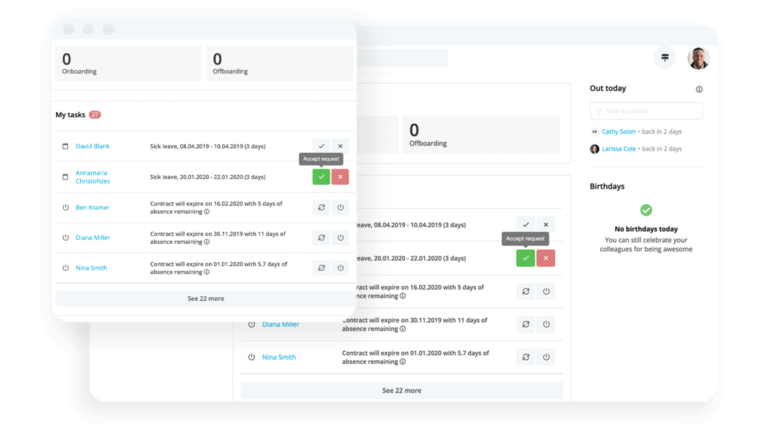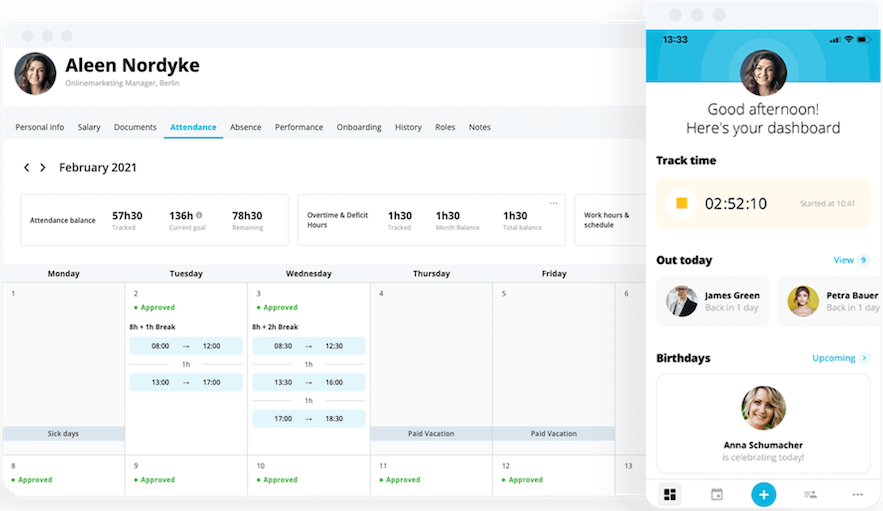What Are the Four Pillars of Wellbeing?
Promoting wellbeing in the workplace is crucial to ensuring employees feel supported, healthy, and productive in their jobs. This has become more relevant than ever as we come out of the COVID-19 pandemic, adjust to the “new normal”, return to the office, or start a new hybrid or remote working setup.
Here’s our quick guide to the Four Pillars of Wellbeing and how they impact employees, workplaces, and HR strategies.
Help your organisation become 'Recession Ready.' Download our guide today.
What Are the Four Pillars of Wellbeing?
The Four Pillars of Wellbeing represent four areas that make up the overall health and happiness of a person. In this context, we are discussing how these pillars map to a workplace environment and creating a foundation for employee wellness. All four pillars are important and if one is deficient, the rest can also suffer.
The Four Pillars of Wellbeing are:
Mental wellbeing
Physical wellbeing
Financial wellbeing
Social wellbeing
Mental Wellbeing
Mental (or emotional) wellbeing is the first pillar, and is especially crucial to prioritise as employees deal with the events of the last two years and a changing world. According to one study, mental/psychological wellbeing was the top concern for employees after the pandemic, with almost 60% reporting concerns about stress and burnout.
Mental wellness in the workplace starts with the company’s culture, leadership, and communication with employees. A free subscription to a meditation app might be cool, but it won’t be enough to keep your team emotionally healthy at work.
Physical Wellbeing
Physical wellness is strongly linked with the other pillars of wellbeing; in other words, improving physical wellbeing can in turn positively impact all other areas of employees’ lives. In the study referenced above, physical wellbeing was the 2nd highest concern, with 36% of respondents concerned with things like getting sick or managing chronic conditions.
Steps to improve physical wellbeing in the workplace can include encouraging healthy eating, proper hydration, and plenty of breaks from sitting throughout the day (i.e. walking meetings etc.)
Financial Wellbeing
It’s easy to see how employers can have a significant impact on their employees’ financial wellbeing. This doesn’t just include salaries or wages (although paying employees fairly is critical); other benefits can help employees feel more financially healthy as well. For example:
Retirement funds
Subsidised healthcare
Education or L&D budgets
Financial planning
Discounts or partnerships with other businesses
Social Wellbeing
Many teams started working remotely during the pandemic and some may have decided to stay that way permanently. But whether your team is in the office, working from home, or hybrid, promoting social wellbeing is crucial to keep employees engaged, productive, and satisfied with their work.
Companies will need to reimagine their workplaces – physical, digital, or hybrid – and ensure there is space to build meaningful relationships and bridges between employees and teams.
How Do The Pillars of Wellbeing Work Together?
The Four Pillars of Wellbeing are equally important, and if any one of them is lacking, the rest will be hurt as well. For example, think of how our social or financial wellbeing can affect our mental state, or the impact of our emotional wellbeing on our physical health (and vice versa).
Developing strategies to prioritise our employees’ overall wellbeing, rather than putting all our energy and resources into just one pillar, can bring about big benefits.
15,000 organisations trust Personio for this reason

Just like LUSH and Premier Inn, trust Personio's all-in-one HRIS to upgrade your people operations for now and into the future. Click below to learn more about us.
Book Your DemoWhat Is An Employee Wellbeing Strategy?
An employee wellbeing strategy is a plan of action to support and improve your employees’ health across all four pillars, now and in the future. Creating a cohesive strategy ensures your company isn’t just adding random benefits and initiatives without aligning on common goals.
Creating your corporate wellbeing strategy can go something like this:
Plan goals and objectives
Ask for employee input
Draft a plan
Align with leadership
Obtain needed tools, resources, and benefits
Educate employees on the wellbeing strategy and what’s available to them
Should Your Organisation Have A Wellbeing Strategy?
A wellbeing strategy for your organisation isn’t just nice to have; it’s a need-to-have if you want to be sustainable and successful in the long term. Employee wellbeing allows people to reach their full potential, boost productivity, cope with stress, build relationships with coworkers, and contribute to the success of the organisation.
Research shows that prioritising employee wellbeing can have a host of benefits for the organisation as well. For example, there was 11% less turnover among employers with substantial wellbeing resources and programs compared to those with only a few initiatives.
Saving Time With Personio Allows HR Teams to Focus on Employee Wellbeing
It seems that organisations are understanding the importance of employee wellbeing and are prioritising it more than ever. The CIPD’s Health and Wellbeing at Work 2021 survey reveals that 75% of respondents believe their senior leaders have employee wellbeing on their agenda, versus 61% in the previous year.
With Personio, you can keep track of all your People processes in one place. This helps the HR team save time so they can focus on promoting employee wellbeing, rather than just managing paperwork.

